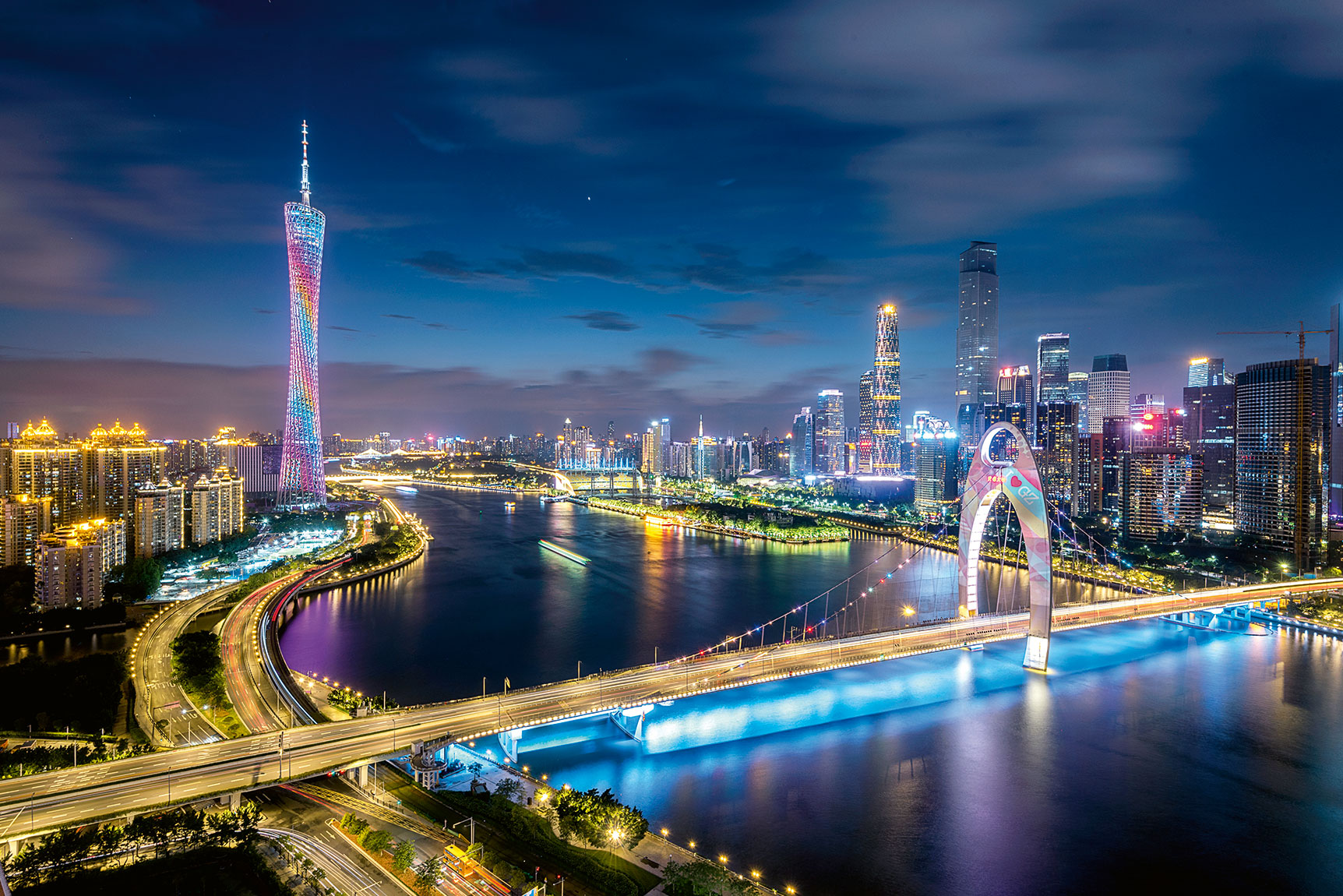
Questions on protection
1. How can the public prevent COVID-19?
- Develop good personal hygiene habits. Pay attention to personal hygiene. Cover your mouth and nose with a tissue when coughing or Wash your hands frequently. Do not touch your mouth, eyes, and nose with dirty hands, and do not spit on the ground.
- Avoid dinner parties. People who have dinner together are in close contact with each The droplets produced by coughing and sneezing can directly contaminate the whole group of people who have dinner together and easily cause the spread of disease. In order to prevent the spread of the 2019-nCoV, please do not have dinner together.
- Avoid public places. There are many people in public places with large turnover and complicated personnel composition. Once there are virus carriers, it is easy to cause human- to-human transmission, especially in crowded public places with poor air mobility, such as shopping malls, restaurants, cinemas, Internet cafes, KTV, stations, airports, docks and exhibition
- Open the window frequently for The indoor environment is airtight, easy to cause bacteria breeding, increase the risk of human infectious disease. Frequent window ventilation can effectively reduce the content of indoor pathogenic microorganisms and other pollutants, the ultraviolet ray in the sun and sterilization. Therefore, windows should be opened every morning, noon and night for at least 15 minutes.
- Keep the room The door handle, remote control, mobile phone, telephone landline, toilet ring, children’s toys, etc. are commonly used by family members. After being contaminated by germs, these items become important carriers and media for disease transmission. For the health of family members, they should always be cleaned with a wet towel or paper towel, if necessary, use a household disinfectant.
- Wash your hands A variety of diseases can be transmitted by hand. For example, food contaminated by germs can spread digestive tract diseases, rubbing the eyes can transmit red eye disease, keratitis and other diseases, and pulling the nose can transmit respiratory diseases. Wash your hands promptly after returning home, before and after meals, and covering your mouth and nose with your hands when coughing or sneezing. When washing your hands, use running water and soap or hand sanitizer.
- Wear a mask when going out. The public should wear disposable medical masks (children choose products with equivalent performance) when going out to public places, seeking medical treatment (except for fever clinics), and taking public transportation. Do not spit on the Wrap nose and nose secretions with tissue paper, and dispose of them in a covered dustbin.
- Develop a healthy lifestyle. Reasonable diet, not overeating, meat and eggs should be thoroughly Don’t smoke, and don’t drink too much. Balance work and rest, not staying up late, and do proper exercises.
- Health Try to avoid close contact with people who have symptoms of respiratory diseases such as fever, coughing or sneezing. Active temperature measurement when you feel consciously feverish. If there is a child in the family, touch the child’s forehead in the morning and evening. If there is a fever, take a temperature measurement. If you find any symptoms of fever, dry cough, or fatigue in your family, please seek medical advice immediately.
- Do not touch, hunt, process, transport, kill or eat wild
(Reference: Health Education Manual for COVID-19 Control issued by China Health Education Center under guidance of Department of Publicity of National Health Commission)
2. What are close contacts?
Close contact refers to persons who have not taken adequate protection from close contact (within 1 meter) since 2 days before the onset of symptoms of suspected cases and confirmed cases, or since 2 days before the sampling were collected from asymptomatic patients. The specific contact conditions are as follows:
- Cohabitation, study, work, or other close contacts, such as working close to one another, studying in the same classroom or living in the same house;
- Health care workers, family members, or other people who have similar close contact during diagnosing, treating, nursing and visiting the case, such as visiting the patients or staying with the patients in a closed environment, other patients in the same ward and their caregivers;
- People who travel in the same vehicle and have close contact, including caregivers and accompanying people (family, colleagues, friends, ) on the vehicle, or other passengers and stewards who are in possible close contact with cases (suspected cases, confirmed cases) and infected people (mild cases, asymptomatic infections) after investigation and evaluation. See Appendix 1 for Guidelines for judging close contacts of vehicles;
- People who are assessed by the field investigators as persons in contact with close
(Reference: Prevention and control of COVID-19 (Fifth Edition) issued by National Health Commission )
3. What should I do as a close contact?
Close contacts should be taken for centralized medical observation. In areas where conditions do not permit, home-based isolation medical observation can be adopted, close contacts should take their temperature at least 2 times a day, and pay attention to fever, dry cough and other respiratory symptoms or diarrhea and other gastrointestinal symptoms. The medical observation period is 14 days after the last unprotected contact with the cases or cases with asymptomatic infection. After the suspected cases are ruled out, close contacts can be released from medical observation.
Close contacts of confirmed cases and those with asymptomatic infections, if the tests are negative during the medical observation period, need to continue until the observation period expires.
People in centralized or home-based isolation medical observation should live relatively independently, minimize contact with co-residents, clean and disinfect medical observation sites, and avoid cross-infection. Do not go out during the observation period. People can only go out with the approval of the medical observation management staff, and wear disposable surgical masks and avoid going to crowded places.
Health risks should be notified to those who are in the same traffic, such as airplanes, trains, and ships, and those who are not in close contact with each other in living, studying, and working. They should seek medical attention in time if they have symptoms of respiratory infections such as fever and dry cough, and diarrhea and conjunctival congestion, also they should actively inform the recent activity history.
( Reference: Prevention and control of COVID-19 (Sixth Edition) issued by National Health Commission, COVID-19 Cases Close Contact Management Plan issued by National Health Commission)
4. During the medical observation, what symptoms of close contacts need to seek medical attention?
During the medical observation, once the close contact has any symptoms (including fever, chills, dry cough, productive cough, nasal congestion, runny nose, sore throat, headache, fatigue, muscle aches, joint pain, shortness of breath, dyspnea, chest tightness, conjunctival congestion, nausea and vomiting, diarrhea, abdominal pain, etc.), it should be immediately reported to the local health department. According to the regulations, diagnosis and treatment are required in the designated hospitals, and the sampling should be collected for laboratory screening tests. If the result of the screening test suggested it is a suspected case or a confirmed case, medical observation should be performed on those who are in close contact with the case.
(Reference: Prevention and control of COVID-19 (Fifth Edition) issued by National Health Commission)
5. Why should close contacts be observed for 14 days?
The isolation period of an infectious disease is determined based on the incubation period of the disease. The incubation period refers to the period from the invasion of the pathogen to the clinical symptoms. The incubation period of COVID-19 is 1-14 days, mostly 3-7 days, and it is contagious during the incubation period. Considering the incubation period of diseases caused by other coronaviruses, the relevant information of the 2019-nCoV infection cases, and the current prevention and control efforts, the medical observation period for close contacts is set to 14 days.
(Reference: Health Education Manual for COVID-19 Control issued by China Health Education Center under guidance of Department of Publicity of National Health Commission)
6. What are the home precautions?
- During the epidemic period, ordinary families are recommended to open the windows and ventilate
- The surface of the ground, table, furniture and other objects should be cleaned daily and disinfected
- Family members do not share towels, keep their rooms and tableware clean, and air quilts and clothes
- Monitor the health of family members and Active temperature measurement when you feel consciously feverish.
- After going home, wash your hands with soap and running water, or disinfect your hands with an effective disinfectant.
- When some family members have suspicious symptoms, they should be sent to the hospital on time, while others should protect themselves by quarantine measures. After the consultation, the isolation room and items contacted (such as the living room floor, bathroom, furniture countertops, door handles, dining utensils, ) should be disinfected. Wash your hands immediately after disinfection.
(Reference: Guidelines for Public Prevention of Pneumonia Caused by 2019-nCoV Infection issued by Chinese Center for Disease Control and Prevention; PUMCH COVID-19 Prevention and Precautions Handbook issued by Chinese Academy of Medical Sciences and Peking Union Medical College Hospital )
7. How to prevent 2019-nCoV infection in public places?
- On the way to and from work: Wear disposable medical masks or N95 masks
Try not to use public transportation. Walking, cycling, or taking a private car or shuttle are recommended. Try to avoid touching any items in the car with your hands. After returning home, remove your mask and wash your hands first.
- In the dining hall: Have meals in staggered batches instead of having all the people at It is recommended that employees bring their lunch boxes if possible and bring them back to the office to eat after purchasing the food to avoid the crowd.
- Maintain air circulation in public places, open the windows for ventilation frequently, and avoid gatherings with many
- Keep the environment clean and clean up the garbage in
- In epidemic areas, the public should try their best to avoid going to public places, especially places with dense crowds and poor air
(Reference: Guidelines for Public Prevention of Pneumonia Caused by 2019-nCoV Infection issued by Chinese Center for Disease Control and Prevention; PUMCH COVID-19 Prevention and Precautions Handbook issued by Chinese Academy of Medical Sciences and Peking Union Medical College Hospital )
8. How to wash your hands properly?
Handwashing is one of the most direct and effective ways to reduce bacteria and viruses in your hands. Proper handwashing is the key. Proper handwashing refers to washing hands with running water and soap or liquid soap. Each hand should be rubbed for more than 20 seconds. Make sure that the palms, fingers, back of hands, finger seams, nail seams, wrists are cleaned. You can use an alcohol-based hand sanitizer if soap and water are not available.
- Take an appropriate amount of liquid soap (soap) and apply it evenly to the entire palm, back of the hand and fingers.
- Rub your hands carefully for at least 15 seconds, the specific operation is as follows (Figure).
- Rinse hands thoroughly under running
- Hold up some water, rinse the faucet, and then close the faucet (if it is an induction controlled faucet, do not do this step).
- Dry your hands with a clean towel or paper towel, or air dry
Seven-step hand-washing method to prevent COVID-19
- Wash palms: fingers close together, rub your hands palm to palm.
- Wash back of hands: with your fingers linked through the other hand, use your right palm to rub the back of your left hand, then
(Reference: Health Education Manual for COVID-19 Control issued by National Health Commission and China Health Education Center”)
9. How to put on, use, take off and dispose of a mask?
During the COVID-19 epidemic, it is recommended to choose the right type of mask, and not to overprotect it. According to the type and risk level of the works of disease prevention and control, the following guidelines are proposed.
| Mask Type | Main application scenarios |
|
Do not wear or Non-medical mask
|
Recommended for low-risk people:
● Indoor and community residents; ● Those engaged in outdoor activities, including children, students in open spaces; ● Those who work in a well-ventilated workplace. Those who stay at home or in well-ventilated locations with low population density may not require masks. Non-medical masks, such as cotton gauze, activated carbon, and sponges, have certain protective effects, and can also reduce the spread of droplets caused by coughing, sneezing and talking. |
|
Disposable medical mask |
Recommended for people with a lower risk of exposure: ● Public in densely populated areas such as supermarkets, shopping malls, vehicles, elevators. ● Indoor office environment; ● Patients attending medical institutions (except for fever clinic); ● Children in kindergartens, students, etc who are engaged in intensive learning and activities. |
| (children choose products with similar performance) | |
|
Medical surgical mask
|
Recommended for people with a medium risk of exposure:
● General outpatient, medical staff in the ward, etc.; ● Staff in densely populated places, including those in hospitals, airports, railway stations, subways, ground buses, airplanes, trains, supermarkets, restaurants, etc. ● Personnel engaged in administrative management that related to the epidemic, and professionals such as police, security, courier, etc.; ● Patients with fever or suspected case that are isolated at home, and persons living with them |
| Particulate respirators mask |
Recommended for people with a higher risk of exposure: ● Medical staff working in the emergency department, etc.; ● Public health physicians who conduct epidemiological investigations of close contacts. ● Testing personnel of environmental and biological samples related to the epidemic. |
| (children choose products with similar performance) |
|
Medical protective mask
|
Recommended for personnel with high-risk of exposure :
● All staff working in the wards, ICUs, and observation rooms for patients with COVID-19 (confirmed cases, suspected cases), including clinicians, nurses, nurse assistants, cleaners, mortuary staff, etc. ● Doctors and nurses of fever clinics at designated medical institutions in the affected areas; ● Public health physicians who conduct epidemiological investigations of confirmed and suspected cases; Wear safety goggles or face shields in the first aid of infected patients and during tracheal intubation and bronchoscopy. When there is a shortage of medical protective masks, you can choose to replace them with N95 / KN95 and above standard particulate respirators masks. You can also choose self- priming filter respirators (full or half facepiece) with particulate filter cotton, and powered air-purifying respirator has better protection. |
(Reference: Guidelines for the Selection and Use of COVID-19 Masks in Different Populations issued by National Health Commission; Health Education Manual for COVID-19 Control issued by National Health Commission and China Health Education Center)
How to wear medical surgical masks?
- The dark side faces outwards, and the side with the metallic strip faces upwards;
- Fold up and down to cover the nose and chin;
- Mold the metallic strip to make it close to the bridge of the nose to prevent side
How to wear protective masks (take KN95 or N95 masks as examples)?
- The side with the logo faces outwards, and the side with the metallic strip faces upwards;
- Fasten the elastic straps that fixes the mask, or position the elastic straps around both ears to fit snugly over the face;
How to wear headbands masks?
- Hold the mask body with one hand, put fingertips on the metallic nose strip, let the two headbands hang freely under the back of the hand;
- The metallic strip faces up, let the mask cover the chin, the upper headband is worn on the top of the head, and the lower headband is worn on the neck;
- Starting from the middle of the metallic strip with both index fingers, press down on it while moving to both sides to shape the shape of the bridge of the nose.
How to wear ear-loops masks:
- Face the side without the nose clip, and pull the ear straps with both hands, so that the nose strip faces up;
- let the mask against your chin;
- Pull the ear straps to the back and adjust them to feel comfortable;
- Starting from the middle of the metallic strip with both index fingers, press down on it while moving to both sides to shape the shape of the bridge of the nose. Pinching the nose strip with one hand will cause sharp angles and air leakage, and reduce shielding performance. The nose strip should be pressed with both sides at the same
Whether it is a headbands or ear-loops mask, an air impermeability test is required after wearing. Cover the mask with both hands and breathe. If you feel that gas leaks from the nose strip, you should readjust it. If you feel that gas leaks from both sides of the mask, you need to further adjust the position of the headbands and earloops; if it still leaks, you need to change another one.
(Reference: Health Education Manual for COVID-19 Control issued by National Health Commission and China Health Education Center)
11. How to change, store, and dispose of masks?
During the epidemic of the COVID-19, the use of masks can be appropriately extended (time of use, frequency of use) on the premise of protecting public health:
- The medical protective masks have a service life, and the masks are for exclusive They cannot be used cross-personally. High-risk personnel need to change masks after re-entering after finishing work, eating (drinking water), and using the toilet.
- The mask should be changed if it is contaminated by the patient’s blood, respiratory/nasal secretions, and other body fluids.
- Higher risk personnel need to change masks after receiving highly suspected
- Masks worn by other risk level people can be used Wash your hands before wearing the mask, and avoid touching the inside of the mask when wearing it. Masks need to be changed in time if they are dirty, deformed, damaged, or smelly.
If you need a re-use a mask, you can hang it in a clean, dry and ventilated place, or place it in a clean, breathable paper bag. Masks need to be stored separately to avoid contact with each other and identify the user of the mask. Medical protective masks cannot be cleaned, nor can they be disinfected by disinfectants, heating, etc. Cotton gauze masks can be cleaned and disinfected. Other non-medical masks are handled according to their instructions.
The masks used by healthy people can be disposed of according to the requirements of domestic garbage classification. Masks worn by suspected or confirmed cases should not be discarded randomly. They should be treated as medical waste and disposed of in strict accordance with relevant procedures for medical waste.
(Reference: Health Education Manual for COVID-19 Control issued by National Health Commission and China Health Education Center )
12. What are the symptoms in need of medical attention?
If both of the following conditions are met, you should go to the outpatient clinic of the designated hospital:
- Fever (armpit temperature ≥37.3 °C), cough, shortness of breath and other symptoms of acute respiratory infections;
- Patients with a history of travel or residence in Wuhan and surrounding areas, or other areas with local cases of continuous transmission, or who have been exposed to feverish patients with respiratory symptoms who come from Wuhan and surrounding areas, or other areas with local cases of continuous transmission within 14 days before the onset of illness, or a small cluster of people are
Medical surgical masks or N95 masks should be worn on the way to and throughout the hospital visit. Avoid using public transportation. You can take a private car or call an ambulance. Keep away from other people as much as possible on the road and in the hospital at a safe distance of 1.5m-2m (at least 1m). When you seek medical treatment, you should truthfully explain your conditions and the history of medical treatment. In particular, tell the doctor about your recent travel and residence history in Wuhan, history of contact with pneumonia patients or suspected patients, animal contact history, etc.
(Reference: Health Education Manual for COVID-19 Control issued by National Health Commission and China Health Education Center; PUMCH COVID-19 Prevention and Precautions Handbook issued by Chinese Academy of Medical Sciences and Peking Union Medical College Hospital )
13. How should patients with other diseases seek medical treatment during the epidemic period?
In principle, during the epidemic period, except for severely ill patients who must seek medical attention immediately, general people should minimize their visit or do not visit to the hospital; and if they must seek medical treatment, they should choose the nearest medical institution that can meet the needs and have a small number of outpatients. If hospital visits are essential, one should take up the essential and urgently needed medical examinations and operations, and leave other checkups and operations later dates. If you can choose a department, try to avoid the fever clinic and emergency department.
Patients and accompanying family members should wear medical surgical masks or N95 masks on the way to and within the hospital. If possible, avoid going to the hospital by public transportation. Keep your hands clean at all times, and prepare a portable hand sanitizer containing alcohol. Keep as much distance as possible (at least 1 meter) with other people on the way and in the hospital.
(Reference: Guidelines for Public Prevention of COVID-19 issued by Chinese Center for Disease Control and Prevention)
14. Is it safe to receive a package from a country or region where a virus has been found?
Yes, it’s safe. Those who receive the packages are not at risk of getting infected by the 2019- nCoV. From the experience of other coronaviruses, we know that this type of virus does not survive long on objects such as letters or parcels.
(Reference: Answers to Common Questions About 2019-nCoV by WHO)
15. How to protect yourself when traveling?
- Gloves are recommended when on Seat armrests, backrests, toilet door handles, doors, and poles are all public spaces.
- Do not directly contact your eyes, nose, and mouth after touching them with your hands to avoid contact transmission. Wash your hands with soap and water or alcohol-based hand sanitizer.
- Cover your mouth and nose with a tissue or sleeve cuff or curved elbow when you cough or sneeze, then wash your hands.
- Wear masks all the time, you can wear disposable medical masks or N95
- Eat only thoroughly cooked hot
- If you currently have a fever or cough, please avoid
- If you are sick during the trip, please notify the flight or train attendants in time, seek medical help as soon as possible, and inform the medical staff of your travel
- Self-monitoring of your health should be carried out twice a day for 14 consecutive days, starting from leaving the epidemic areas. If condition permits, try to live alone or in a well- ventilated single room, and minimize close contacts with your
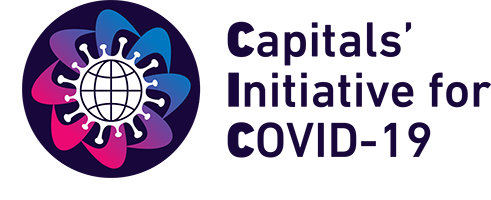
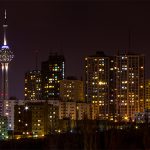
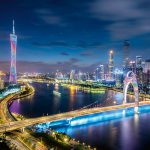
![GUANGZHOU [Efforts against COVID-19]](https://capitalsinitiative.com/wp-content/uploads/thumbs_dir/Guangzhou-1wgs4ch01x43nutgkzq09eqei7usujg5tju3dorwg5gk.jpg)
